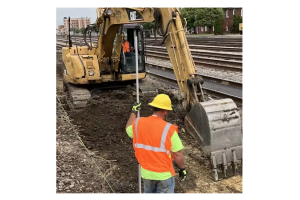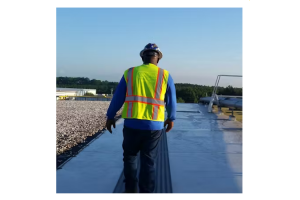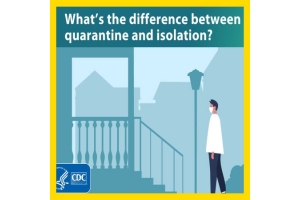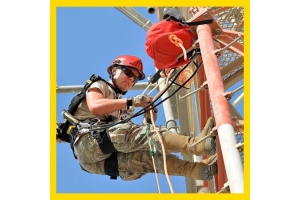Currency
-
November 30, 2022Tumwater, WA — Updated fall protection rules in Washington state went into effect Nov. 1, bringing them in line with that of federal OSHA.
Initiated in July, rulemaking involved amending Washington Department of Labor & Industries’ safety standard fall protection rules to make them “at least as effective” as those administered by federal OSHA – a requirement of OSHA’s State Plan program. The update involved revising certain requirements contained in the Unified Safety Standards for Fall Protection – specifically those related to roofing activities that involve leading-edge work, work performed on a low-pitched or flat roof, and ski area facility and operations.
During construction projects involving roofing work on a low-pitched or roof and constructing a leading edge, the threshold height for required fall protection was lowered to 6 feet from 10 feet.
-
November 30, 2022Workers’ occupation, industry, and specific job duties factor into how physically close to others they must work, whether they need to interact with the public, and whether they are potentially exposed to infectious diseases like COVID-19, according to new research from the National Institute for Occupational Safety and Health (NIOSH).
In what may be the first study of workplace COVID-19 exposures outside of healthcare settings, NIOSH researchers examined the differences in exposures to the SARS-CoV-2 virus that causes COVID-19, the institute said November 17. One in five workers surveyed reported being exposed to COVID-19 at work, according to NIOSH.
“We found exposure to COVID-19 at work was common among survey respondents,” Hannah Free, MPH, lead author of the study, said in a statement from the institute. “Despite not being in healthcare, many of the -
November 30, 2022An eye injury is painful, expensive, and can have long-term impacts. Yet, studies show 90% of all eye injuries are preventable.1 In the US, half of them occur at home while the other half occur at work. Of the reported injuries, up to 20% cause temporary or permanent vision loss.2
Excuses for not wearing eye protection include discomfort, improper fit, fogging or distorted vision, and simply believing there is no need for wearing it.3
The most common types of injuries at work are chemical exposures, foreign objects in the eye, and scratches on the cornea. Other high-risk injuries are burns from steam and welding-related injuries from ultra-violet and infra-red exposures.4
Common home-related eye injuries are caused by home repairs, yard work, cleaning, and cooking. Another 40% of non-work-related injuries occur during recreational or sports events.5
-
November 30, 2022Over the past few years, many companies are now offering online safety training. In an article on NASP (National Association of Safety Training), author Logan Torrey outlines some benefits of using this type of training.
Less Time Lost
In-person safety meetings can take up a lot of time. Imagine a business halting its operations for a single eight-hour workday to conduct safety training. Many businesses can’t afford that loss in time and productivity.
Online safety training can help businesses regain that lost time. It’s a streamlined process that many businesses allow their employees to do on their own, erasing the need to halt operations so everyone can attend a mandatory safety meeting. Even if businesses want their employees to complete their online safety training on-site, they can stagger the times when people do their training -
November 22, 2022It’s probably happened to most of us. That momentary lapse of attention, thinking about a personal problem or distraction by an activity that ends in a slip, trip or fall. A stumble down a stairway. A trip over an uneven surface. Slipping on the ice. It can lead to a variety of regrettable events ranging from a simple bruised shin to an extremely serious injury. It’s just one of a number of conditions and situations that set the stage for slips, trips and falls in the workplace.
According to the U.S. Department of Labor, slips, trips and falls make up the majority of general industry accidents, which account for:
- 15% of all accidental deaths per year, the second-leading cause behind motor vehicles
- About 25% of all reported injury claims per fiscal year
- More than 95 million lost work days per year — about 65% of all work days lost
-
November 22, 2022It's a very grim statistic. From 1992-2019 workplace violence has killed almost 18,000 people. This number comes from a recent study conducted by NIOSH, the Bureau of Justice Statistics, and the Bureau of Labor Statistics provides a broad view of workplace violence in the United States during the 27 years from 1992 to 2019. they define workplace violence as incidents that occurred outside the workplace but stemmed from work-related issues. Looking specifically at 2019, the most recent year included in the study, the total of 454 homicides represents a 58% decrease from the high of 1,080 in 1994 but also an 11% increase since 2014. Homicides as a percentage of total fatal occupational injuries fell from 17% in 1993 to 8.5% in 2019.
More than 40% of workplace homicides in this period occurred in public buildings such as convenience stores and office buildings. Most other workplace homicides took place on streets, in private residences, and on industrial premises.
-
November 22, 2022Washington — In response to a recent fire in a high school chemistry laboratory that resulted in multiple injuries, the Chemical Safety Board is calling on schools and educators to review agency guidance for lab and classroom work involving flammable liquids.
CSB states that although it isn’t investigating the Oct. 12 incident at Dinwiddie High School in Virginia, it’s reminiscent of past instances that prompted an incident investigation. In those cases, an individual, as part of a lab demonstration, poured the flammable chemical methanol from a bulk container onto flames. A flashback to the bulk containers led to fires that caused injuries.
Tips from the agency:
- Don’t use bulk containers of flammable chemicals in educational demonstrations when small quantities are sufficient.
- Implement strict safety controls when demonstrations
-
November 22, 2022An engine fire on a towing vessel was made worse when the ship’s crew failed to successfully activate the fixed fire-extinguishing system due to a lack of training.
There were no injuries, but the vessel suffered $1.8 million in damages, the National Transportation Safety Board (NTSB) stated in an Oct. 13, 2022, investigation report.
2 crew members used 8 portable fire extinguishers
The towing vessel Captain Kirby Dupuis was pushing loaded dry cargo barges on the Ohio River near Belleview, Kentucky, on Nov. 9, 2021, when a fire broke out on its portside engine.
Two crew members initially fought the fire using eight portable fire extinguishers and eventually attempted to activate the ship’s fixed fire-extinguishing system.
The Captain Kirby Dupuis was outfitted with a manually activated fixed -
November 08, 2022Portland, OR — A recent study of residential construction supervisors in Oregon who received toolbox talks via text messages showed that their compliance with Oregon OSHA’s standard on safety meetings increased – and the delivery method was welcomed.
Researchers sent seven different toolbox talks, based on Oregon Fatality Assessment and Control Evaluation reports, to 56 supervisors via text every two weeks for three months. Results show that adherence to the agency’s standard, which requires at least one safety meeting a month and a meeting before the start of each job that lasts more than a week, rose 19.4% among the participants.
“We were able to see that using mobile phone technology to disseminate these toolbox talks was feasible and desirable among supervisors,” study co-author Sean Rice, a biostatistician with the Oregon Institute of Occupational Health -
November 08, 2022lammable gas leaks continue to pose a real threat to workers and assets across the process industry. Gas and flame detection provide an early warning against this risk. But no single detection technology alone is 100 percent effective, which is where a layered approach comes in. By integrating the following four layers of protection, you can minimize the risk of flammable gas leaks going undetected.
Detecting a gas leak early is key to preventing major disruption to plant operations. This is where ultrasonic gas detection technology is superior. This technology can ‘hear’ the ultrasounds emitted by escaping gas at the speed of sound. Even a small and low-pressure leak within a 20 m range* can be identified, buying you critical time to respond.
However, ultrasonic detection alone isn’t enough. Only pressurized gas can cause an ultrasonic detector to activate, meaning









